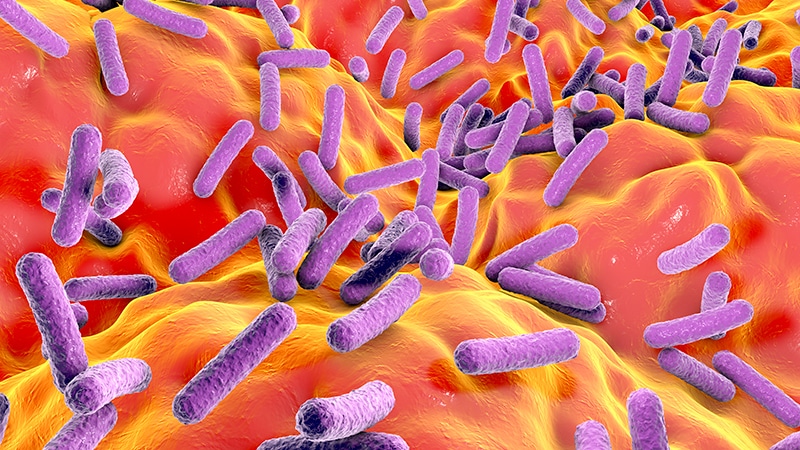Diverse Gut Microbial Features Linked to Type 2 Diabetes Risk: A Meta-Analysis Reveals Potential Diagnostic Biomarkers
Основные понятия
Gut microbial features are significantly associated with type 2 diabetes, suggesting the microbiome's role in its pathogenesis and potential for diagnostic biomarkers.
Аннотация
This study conducted a meta-analysis of 8,117 metagenomes from 10 cohorts across different regions to identify gut microbial features linked to type 2 diabetes (T2D) and prediabetes. The participants included 1,851 patients with T2D, 2,770 individuals with prediabetes, and 2,277 normoglycemic controls.
The key findings are:
- 19 phylogenetically diverse microbial species were associated with T2D, including Streptococcus species indicative of inflammation and Bacteroides fragilis, an immunogenic fragilysin-producing species.
- Prevotella copri, a microbe that can produce large amounts of branched-chain amino acids, was more abundant in the gut flora of patients with T2D.
- Within-species phylogenetic diversity of 27 species was associated with differences in T2D risk.
- The microbial signature in T2D contributed to perturbations in glycolysis, butyrate fermentation, and increased biosynthesis of bacterial structural components.
The researchers believe that changes in the gut microbiome may precede and contribute to the development of T2D, suggesting the potential for microbiome-based interventions to reduce T2D risk. However, further prospective and interventional studies are needed to establish causality.
Customize Summary
Rewrite with AI
Generate Citations
Translate Source
To Another Language
Generate MindMap
from source content
Visit Source
www.medscape.com
How the Gut Microbiome Might Influence Diabetes Risk
Статистика
The study included 8,117 metagenomes from 10 cohorts across the United States, Europe, Israel, and China.
The participants had a mean age of 57.9 years, and 54.4% were women.
The study population included 1,851 patients with type 2 diabetes, 2,770 individuals with prediabetes, and 2,277 normoglycemic controls.
Цитаты
"We believe that changes in the gut microbiome cause type 2 diabetes."
"If these microbial features are causal, we can find a way to change the microbiome and reduce type 2 diabetes risk."
Ключевые выводы из
by Shrabasti Bh... в www.medscape.com 07-24-2024
https://www.medscape.com/viewarticle/how-gut-microbiome-might-influence-diabetes-risk-2024a1000dkx
Дополнительные вопросы
How can the identified gut microbial features be leveraged to develop novel diagnostic or prognostic biomarkers for type 2 diabetes?
The diverse gut microbial features identified in the study, such as specific species like Streptococcus and Bacteroides fragilis, can serve as potential biomarkers for diagnosing or predicting the risk of type 2 diabetes. By analyzing the abundance of these microbial species in individuals, healthcare providers could potentially identify those at higher risk for developing T2D. Additionally, the observed perturbations in glycolysis and butyrate fermentation pathways, along with changes in bacterial structural components, could be further explored as biomarkers for T2D. Future research could focus on developing diagnostic tests that assess the presence and abundance of these microbial features to aid in early detection and personalized management of T2D.
What are the potential mechanisms by which the observed gut microbial changes contribute to the pathogenesis of type 2 diabetes?
The observed gut microbial changes, such as the enrichment of proinflammatory species like Streptococcus and immunogenic species like Bacteroides fragilis in patients with T2D, can contribute to the pathogenesis of the disease through various mechanisms. These microbial species may trigger inflammation and immune responses in the gut, leading to systemic inflammation and metabolic dysfunction, which are key factors in the development of insulin resistance and T2D. Moreover, the production of branched-chain amino acids by microbes like Prevotella copri can influence metabolic pathways and potentially contribute to insulin resistance. The dysregulation of glycolysis and butyrate fermentation pathways, as well as changes in bacterial structural components, may further exacerbate metabolic disturbances and insulin sensitivity, ultimately promoting the development of T2D.
What dietary, lifestyle, or therapeutic interventions targeting the gut microbiome could be effective in reducing the risk of type 2 diabetes?
Interventions targeting the gut microbiome offer promising avenues for reducing the risk of T2D. Dietary modifications, such as increasing fiber intake to promote the growth of beneficial bacteria and consuming prebiotics and probiotics, can help restore microbial balance and improve metabolic health. Lifestyle changes, including regular physical activity, stress management, and adequate sleep, can also positively impact the gut microbiome and reduce T2D risk. Therapeutic interventions like fecal microbiota transplantation (FMT) or the use of microbial-based therapies may hold potential in modulating the gut microbiome to prevent or manage T2D. Additionally, personalized approaches that consider an individual's unique gut microbial profile could be developed to tailor interventions for optimizing metabolic health and reducing T2D risk.
0
